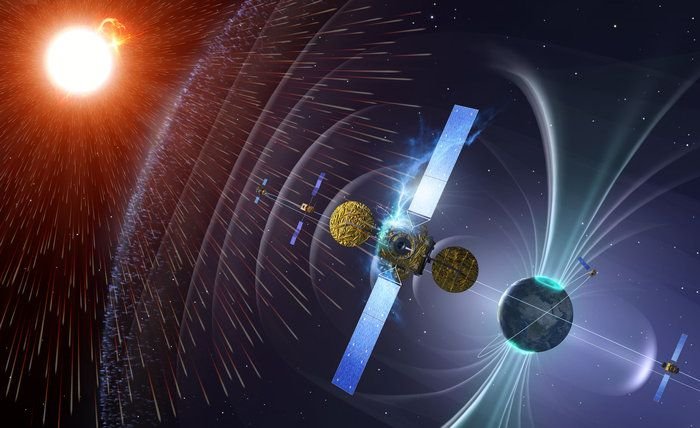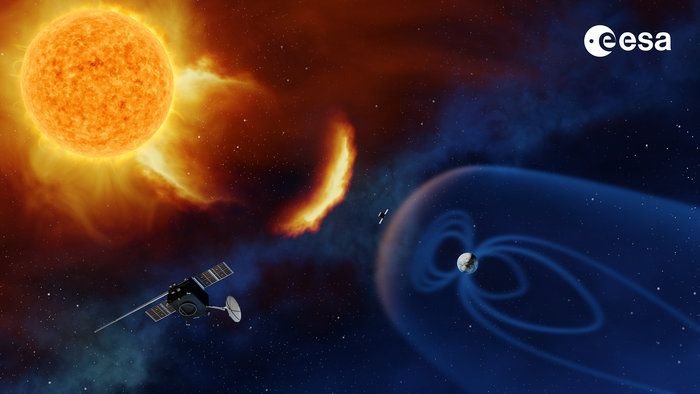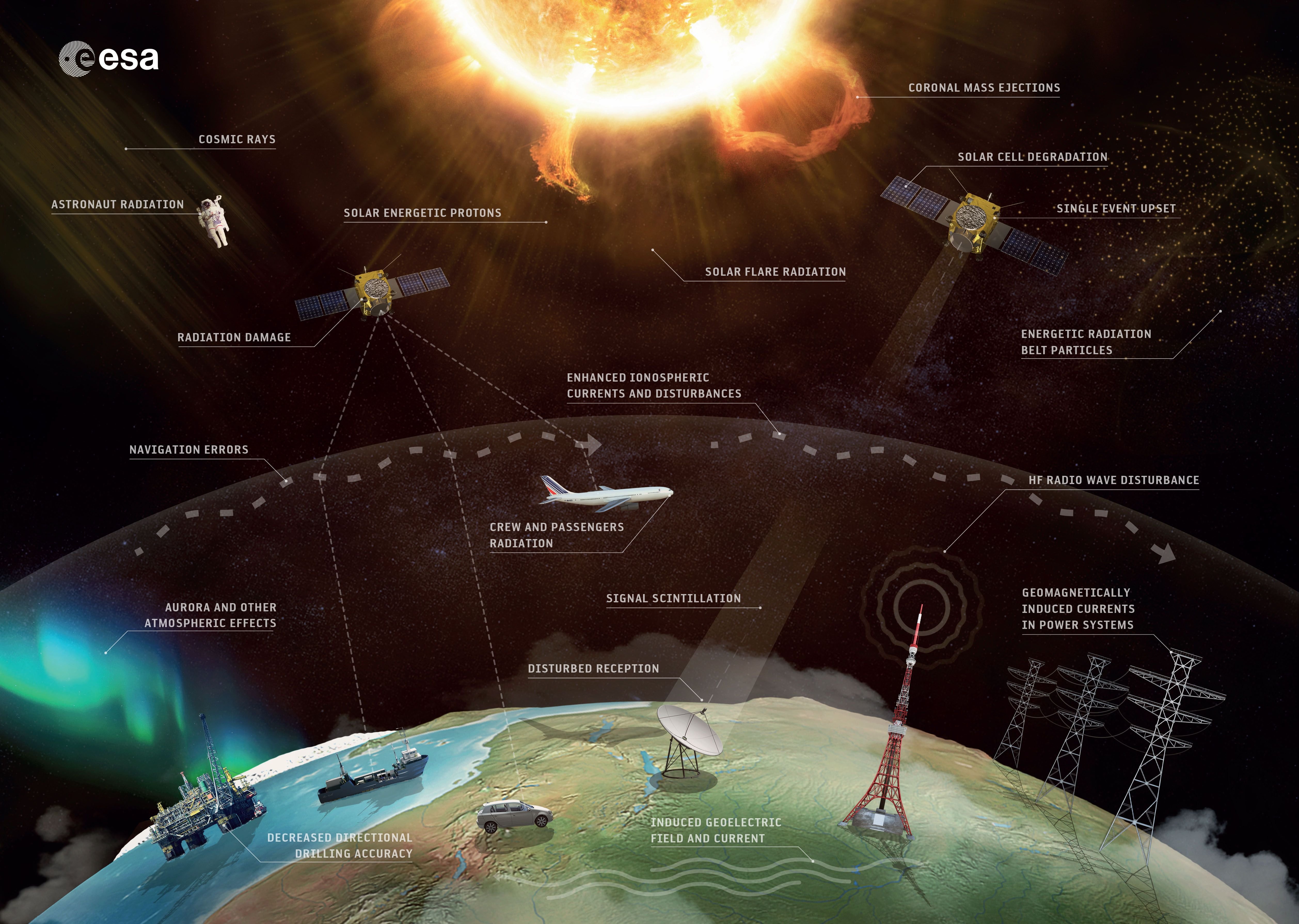Unfortunately, several disasters have shaken numerous nations, these are a reminder of how fragile and vulnerable humanity is to natural phenomena. The resilience to adverse situations resulting from these phenomena is built from the surveillance and investigation of them. This is the main reason why the study of space weather allows society to know and understand how these phenomena of solar activity influence environment of our planet as well as the damages caused by these disturbances in the technological systems of our modern society.
For this reason, I wanted to share this post with each reader, since from my point of view, I think, it should be essential to know a little more about our home and its surroundings; the earth.
To begin we must know that space weather is the estimation and real-time analysis of the physical properties of the Sun, the magnetic field of the earth and the interplanetary medium. There is a relationship between each of these systems, which is affected by the activity coming from the Sun, these effects are not local as happens during an earthquake or a hurricane, but it has a global impact, damaging a large part of our planet.
Space weather deals with environmental conditions in space and how they are influenced by solar activity.
The main problem of these effects has its origin in the social dependence on technologies that are vulnerable to solar activity as is the case of telecommunications networks, satellites, meteorological services, aviation, global positioning systems (GPS) , the generation and transmission of electrical energy. Especially in high latitudes.
Solar phenomena have no impact on tectonic activity.
Another fundamental aspect is the increase in radiation in space, although we know that this represents a risk to the health of the astronauts on the International Space Station, as well as to those who wish to participate in space missions in the future. Destination to the Moon or Mars.
These are the most relevant effects on earth caused by these disturbances.
In the energy infrastructure:
- Electrical networks: solar storms generate plasma, electrons and radiation. This causes falls in the networks and even come to melt the transformers of the same.
- Oil pipelines: corrosion by induction of currents; ignition.
In communications:
- Abnormalities in communications or losses of them due to the X-rays of solar flares.
- Abnormalities in satellite communications; fading and noise in the signal of the same.
In air transport:
- Danger for aeronautics.
- Deviations of airplanes or change of routes in polar areas.
Each passenger can receive a dose of radiation equal to that of a chest x-ray during large-scale solar flares.
Defense.
- Loss of communications with vessels, remote locations, vehicles, monitoring stations.
- Radar detection problems.
- Uncertainty in positioning.
Effects caused in the environment.
- Effects of climatic.
- Variation in the ozone layer.
- Variation of the ionosphere.
Problems to the Satellites.
- Premature entry of satellites in low orbit.
- Degradation of solar panels.
- Interference in the satellite sensors.
- Aging of electronic materials and equipment: parametric drifts, non-functioning.
- Electrostatic charge and discharge: anomalies in the orbits, degradation of components.
- Breaks and burns. Faults in the operation.
- Simple radiation events: destruction of equipment, loss of functions or mission, temporary unavailability.
For the satellites in orbit, the degradation of communications, performance, reliability and total duration. These are fundamental factors that must be taken into account when designing them.

For space weather services to be precise and reliable, it is necessary to monitor the sun and the space environment from various strategic points in order to reliably spread data and information.
It should be noted that thanks to the fact that our planet is well protected by the magnetic field (magnetosphere) and the atmosphere; Our magnetic field diverts much of the particles from the solar wind and the atmosphere filters out ultraviolet and X-ray wavelengths of sunlight.
Most solar events and the resulting space weather have little or no effect here on Earth for most people in their daily activities.
To know the status of the current space weather and access to all ESA SWE services, access the Space Meteorological Service Portal through http://swe.ssa.esa.int
To conclude, it should be clear that most of these events associated with space weather have little or no effect on people directly, contrary to our technologies that suffer the greatest damage due to these phenomena.
Space weather monitoring is considered a national security issue.

ESA: European Space Agency.
ESA credit as source of the images. Photo: ESA; Photo: ESA / Cluster; Image: ESA / NASA - SOHO / LASCO
Once again, if you liked what you just read you can follow me and give me UPVOTE @jlmol7
Take a look at my blog. See you in the next post ...
References.
- http://www.esa.int/Our_Activities/Operations/Space_Situational_Awareness/Space_Weather_-_SWE_Segment
- http://www.esa.int/spaceinimages/Images/2018/01/Space_weather_effects
- http://www.esa.int/Our_Activities/Operations/Space_Situational_Awareness/Monitoring_space_weather
- http://www.esa.int/Our_Activities/Operations/Space_Situational_Awareness/Space_weather_and_its_hazards
- http://swe.ssa.esa.int/web/guest/solar-weather
- http://www.spaceweather.com/
- https://www.spaceweatherlive.com/es


